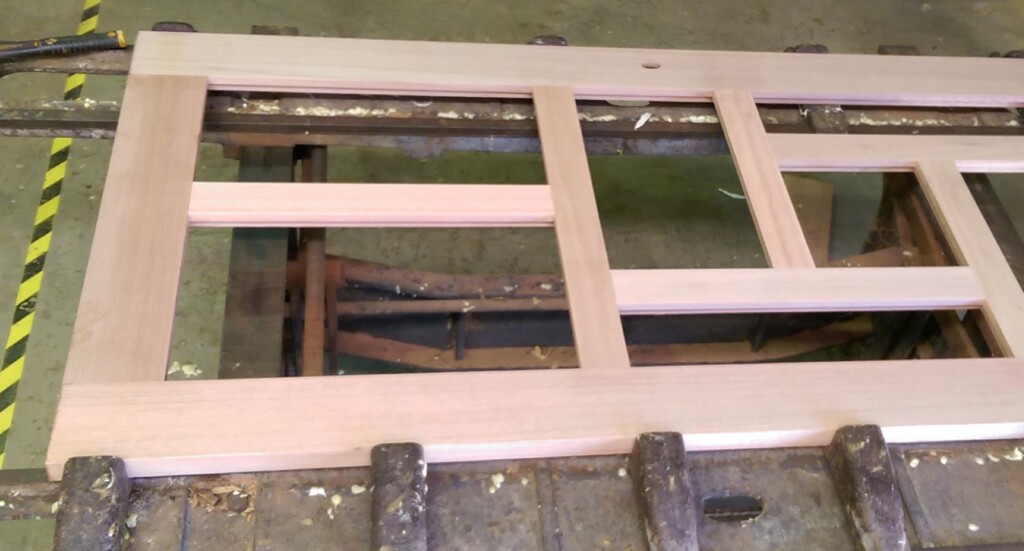
Being aware of the differences between the various types of entrance doors available in the Australian housing market puts you in the best position to make the right choice. Read a little further to discover how our Australian made solid timber joinery doors differ from others.
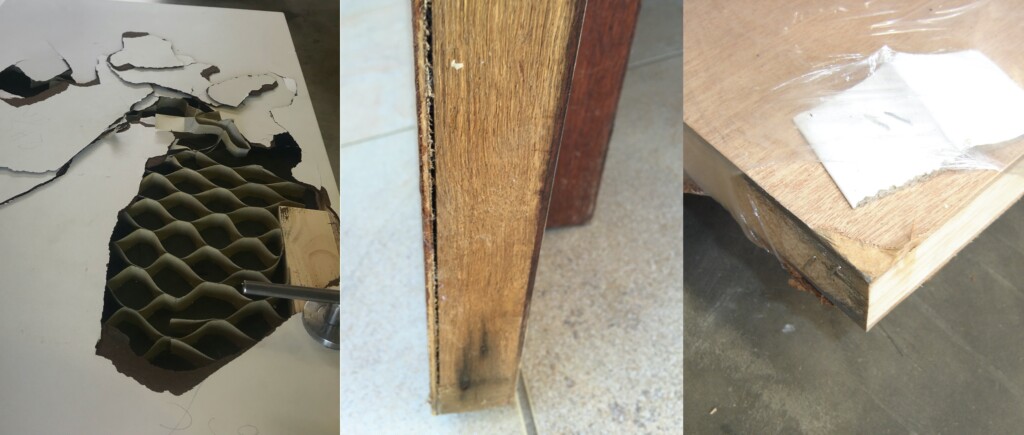
Honeycomb or Semi Solid Construction Doors
This type of door is very light weight and consists of two outer skins of craftwood, masonite or ply, separated by a thin perimeter timber frame. The inner cavity consists of honeycomb cardboard or some other similar filling.
Due to the thin skin and frame, Security is minimal. Durability, when the door is exposed to weather, is also a weak point. This type of door is often fitted or specified to cheaper budget homes, and also used as back doors on a great majority of houses.
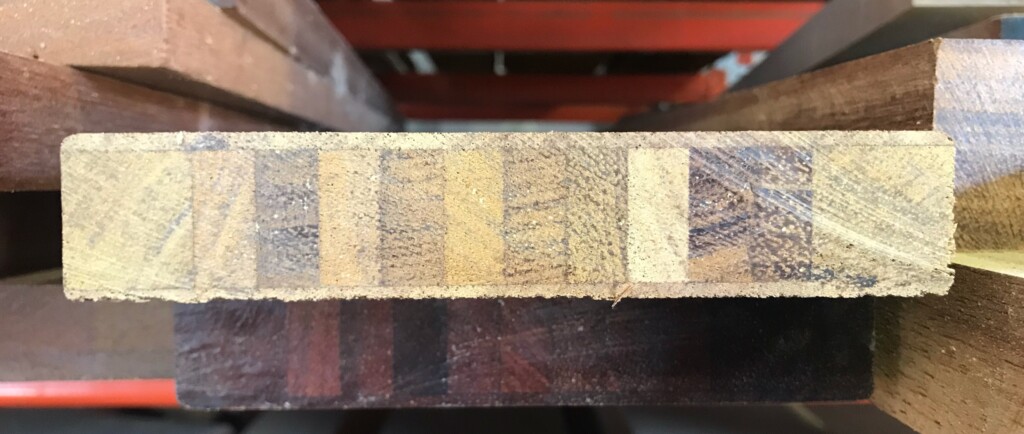
Craftwood Doors
This door is similar in construction to the first type with a skin and frame design, but the inner core is a solid block of craftwood.
Decorative patterns and glass openings are routed onto the surface to give a wide range of designs and often bolection mouldings are glued and nailed to the outer face. These door skins are sometimes paint-grade or a timber veneer option that is usually about 0.6mm thick (about as thin as a fingernail). The routering process cuts through the door skin and exposes the craftwood underneath, making moisture penetration possible, once this occurs the painted surface breaks down and the moisture effected craftwood is irreparable.
If the face veneer is dented, damaged or even scratched deeply, it is impossible to repair or sand without exposing the craftwood or hardboard substrate below. Once the veneer is damaged and the below substrate is exposed, the ‘timber look’ is ruined and therefore the only solution is to paint the door.
Most doors sold in hardware stores are of this or a similar type. They are a very heavy door, so security is not a problem, and often because of their weight some customers in fact believe they are purchasing a wooden door. This style of door does not handle heavy weather well and maintenance demands are considerable.
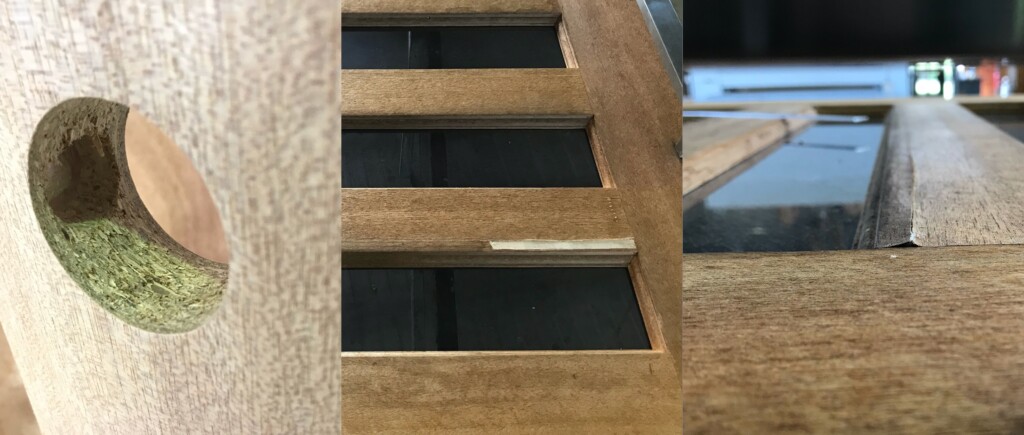
Engineered Joinery Doors, Laminated stiles, Face Veneer options
These doors are often very well finished and can also look and feel very similar to a solid timber joinery door and have many of the same qualities in appearance and construction.
Typically, the door stiles and rails are a laminated timber core (pieces of timber strips and offcuts glued together) with a face veneer to cover over the many timber pieces inside. The manufactured / engineered door stiles and rails are then shaped, profiled and joined together to make a door.
Chipboard or particle board is another type of engineered wood that is used in this type of door construction. The core of the door stile or rail is made of particle board surrounded on both sides with a small strip of timber to hide the particle board. Again the stiles and rails are veneered, shaped profiled and joined together to make a door. Security is not a problem with this construction type and it is considered similar to that of a solid timber joinery door.
Engineered joinery doors can at times have many issues in relation to durability and cosmetic maintenance. Like the craftwood door types, when the veneer is very thin, it is easily damaged and if deep enough it is impossible to sand out this surface damage. It is best to ask the supplier how thick the veneer is. You should be able to see the thickness of the veneer from the edge of the door if it is more than 3mm thick. When the veneer is 0.6mm thick it is virtually impossible to see the veneer from the edge. This is the reason people think it is a solid timber joinery door, when in fact it is an engineered door with a hidden veneer.
Another issue that can occur with exposure to the weather is the cracking and delaminating of the veneer as the timber core underneath the veneer expands and contracts. When Solid Timber Joinery Doors expand and contract small cracks may appear one minute and then disappear the next with a change of moisture conditions; when a timber veneer cracks it is permanent and will never close back together which starts the delaminating process.
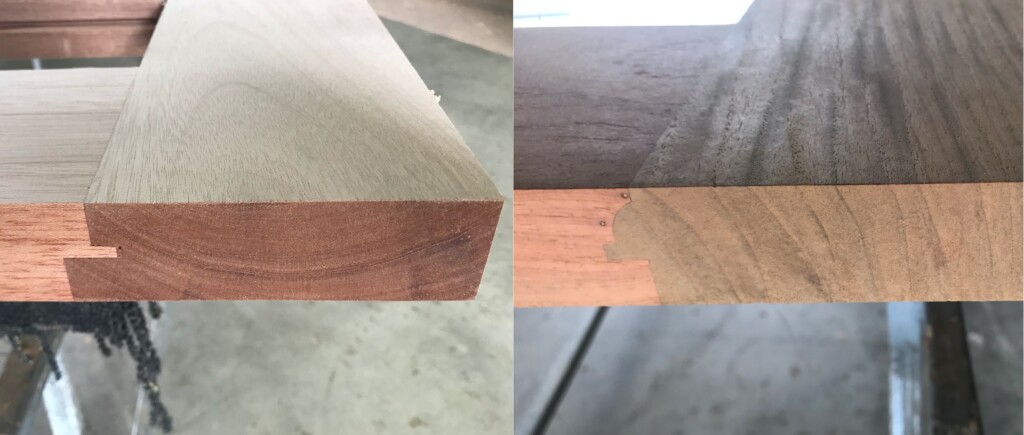
Solid Timber Joinery Doors
A stile and rail construction where the pieces are individually machined, profiled and then joined and pressed together to make the door.
The difference compared with engineered doors is that each component is made from one piece of solid timber. When decorative fielded panels are used, the timber is joined in width to meet the specific width requirement of the panels.
Suppliers and manufacturers vary with the pricing however, as a guide the imported doors are generally cheaper than doors, such as ours that are made in Australia. They are a good choice for security and durability and if damaged or water stained, they can be repaired and sanded.
This is not to say that solid timber joinery doors are perfect for every application. If exposed to heavy weather conditions like rain and particularly long periods of direct sunlight then problems will inevitably occur. Therefore, when selecting your solid timber joinery door it is important to consider its position and how much exposure to the weather it will receive.
Solid timber doors excel in the appearance area. Some of the more decorative doors look stunning and the quality of these doors are seen as they stand the test of time and durability.
